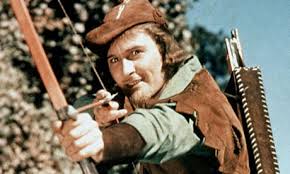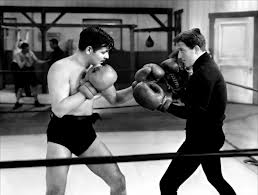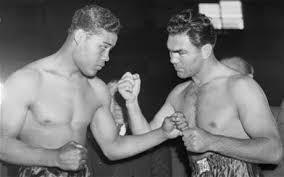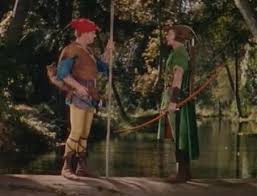The Truth About Men Women Don’t Know
Men make friends by fighting.
This simple fact used to be a truism so commonplace it was a 20th century Hollywood cliche. Two boys modeled on classic American archetypes Huck Finn and Tom Sawyer argue over some trifle and start wrestling and rolling around in the dirt. Cut to the next scene where, dusty and mussed up, the two new pals are walking side-by-side together with an arm slung around each other’s shoulders. The mothers scold their lads but smilingly. This is what boys are.
Grown men also socialized by taking a friendly crack at each other. In 1936’s San Francisco, Clark Gable, as amoral gambler and saloon-keeper “Blackie” Norton, boxes every week with his boyhood pal Spencer Tracy, playing Catholic priest Father Tim Mullen. What is being affirmed is the idea that, despite their opposite stations in life, boxing symbolizes agreed-on manly virtues which are the shared foundation of this strong if unlikely friendship.
This admiration for a good opponent so often found in movies, in real-life cemented a most unlikely professional boxing friendship — a famous story filmed several different times over the years.
The animosity between Joe Louis, “The Brown Bomber,” and German champion Max Schmeling was as ugly and personal as a fight can get since it involved sneering Nazi claims of Aryan superiority. Lewis did lose their first fight, in 1936, thus setting up a rematch now considered one of the major sports events of the 20th century. Their second bout at Yankee Stadium in 1938 lasted two minutes and four seconds; and Schmeling only managed to throw two punches before his manager threw in the towel.
Joe Louis later suffered through years of income tax problems which left him, at times, nearly destitute. Schmeling came forward, hand out, to help Joe in his retirement, and the two became friends who always spoke of each other with respect and admiration. All the ugly racial politics had been settled by World War II. What remained was what is sometime called Honor. And, in truth, everybody loved Louis, and his many friends finally managed to quell the IRS, so the Brown Bomber lived out his final years in comfort. Nobody was happier about this happy ending than Max Schmeling.
Perhaps the classic Hollywood example of man-to-man bonding by combat occurs in director Michael Curtiz’s 1938 The Adventures of Robin Hood starring Errol Flynn.
As Robin is pulling together his band of Merry Men to fight Prince John’s oppression of the Saxons, he happens to run into Alan Hale, Sr., carrying a quarterstaff, coming from the opposite shore, when both men meet crossing a river on the same fallen log. Robin insists John Little make way for “the better man.” John Little is amused: “You’ve met him.” The two decide to fight to settle who will back up for the other, but John, with a gesture, compares his stick to an arrow, so Robin crosses back into Sherwood Forest, topples a stout sapling, and returns to mid-river with his own staff.
“Friend, you should pay me for the lesson you are about to receive,” John announces contentedly.
Both fight well, and each man gets a few triumphant laughs at the expense of the other, until John settles the matter by simply bringing the blunt end of his staff down smartly on Robin’s foot and knocking him, off balance, into the river. Sitting together chatting on the shore afterward, “Little” John suddenly realizes whom it is he has dumped in the water — the peoples’ champion — and starts to apologize. Robin sweeps away his words with yet another of his dazzling smiles. The dialogue line is immortal…
“I love a man who can best me!”
Of course, he does. First, because he looks for fighters against oppression, but, secondly, for a much more practical reason. As is true in any other athletics, the only way you can improve as a fighter is to fight your betters — and learn from your lumps.
So men make friends by fighting.




So do I have to kick your ass again?
Oh, sure, like it was a fair fight! You had one arm tied behind you.